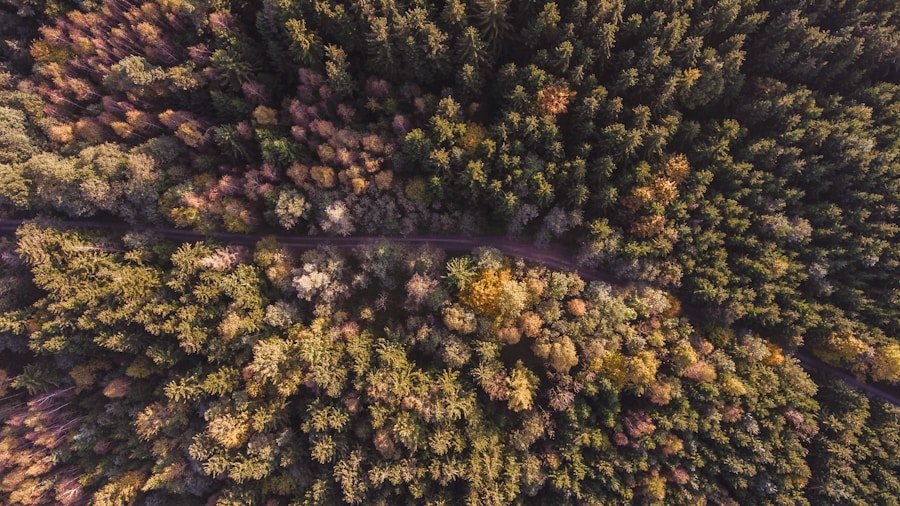Tracking moving subjects with a drone can be a challenging yet rewarding endeavor. It requires a solid understanding of the basics of aerial photography and videography, as well as the ability to anticipate and react to the movements of your subject. When tracking a moving subject, it’s important to consider factors such as speed, direction, and distance, as well as the environment in which you are operating. Additionally, understanding the capabilities and limitations of your drone is crucial for achieving smooth and professional-looking tracking shots.
One key aspect of tracking moving subjects is maintaining a consistent and smooth flight path. This requires a steady hand and a good sense of spatial awareness, as well as the ability to make quick adjustments to your drone’s position and orientation. It’s also important to consider the composition of your shots, as well as the overall aesthetic and storytelling elements that you want to convey. By understanding the basics of tracking moving subjects, you can better prepare yourself for the challenges and opportunities that come with capturing dynamic and engaging aerial footage.
Choosing the Right Equipment for Tracking Shots
When it comes to tracking shots with a drone, choosing the right equipment is essential for achieving professional-looking results. The type of drone you use, as well as the quality of your camera and gimbal, can greatly impact the smoothness and stability of your tracking shots. It’s important to invest in a high-quality drone with advanced flight capabilities, such as GPS positioning, obstacle avoidance, and intelligent flight modes. Additionally, a reliable and high-resolution camera with a stabilized gimbal is crucial for capturing clear and steady footage.
In addition to the drone and camera, other equipment such as ND filters, extra batteries, and a dedicated remote controller can also enhance your ability to capture dynamic tracking shots. ND filters can help reduce glare and improve the overall quality of your footage, while extra batteries ensure that you have enough power to capture extended tracking sequences. A dedicated remote controller with advanced features such as customizable buttons and ergonomic design can also improve your overall control and precision when tracking moving subjects. By choosing the right equipment for tracking shots, you can maximize your creative potential and achieve professional-looking results.
Mastering the Art of Controlling Your Drone for Tracking Shots
Mastering the art of controlling your drone for tracking shots requires a combination of technical skill, spatial awareness, and creative vision. It’s important to familiarize yourself with the various flight modes and settings of your drone, as well as practice different maneuvers and flight patterns to achieve smooth and dynamic tracking shots. Additionally, understanding how to adjust the speed, altitude, and orientation of your drone in real-time is crucial for capturing engaging and cinematic footage.
One key aspect of mastering the art of controlling your drone for tracking shots is understanding how to anticipate and react to the movements of your subject. This requires a keen sense of observation and the ability to predict the trajectory and behavior of your subject in order to maintain a consistent and smooth flight path. It’s also important to consider factors such as wind speed, weather conditions, and potential obstacles in your environment, as these can greatly impact the stability and safety of your drone during tracking shots. By mastering the art of controlling your drone for tracking shots, you can elevate the quality and creativity of your aerial photography and videography.
Tips for Capturing Dynamic and Engaging Tracking Shots
Capturing dynamic and engaging tracking shots with a drone requires a combination of technical skill, creative vision, and strategic planning. One key tip for achieving professional-looking tracking shots is to vary your flight patterns and angles in order to capture different perspectives and compositions. This can include flying in circular or linear patterns around your subject, as well as adjusting your altitude and orientation to create dynamic and visually interesting shots.
Another important tip for capturing dynamic tracking shots is to consider the overall storytelling and aesthetic elements of your footage. This can include factors such as lighting, framing, and movement, as well as the use of creative techniques such as panning, tilting, and zooming to add depth and dimension to your shots. Additionally, it’s important to consider the pacing and rhythm of your footage, as well as the overall flow and coherence of your tracking sequences. By following these tips for capturing dynamic and engaging tracking shots, you can elevate the quality and impact of your aerial photography and videography.
Safety Considerations When Tracking Moving Subjects with Your Drone
When tracking moving subjects with a drone, it’s important to prioritize safety at all times in order to prevent accidents or injuries. One key safety consideration is to maintain a safe distance from people, animals, and property in order to minimize the risk of collisions or disturbances. It’s also important to consider factors such as weather conditions, visibility, and potential obstacles in your environment, as these can greatly impact the stability and safety of your drone during tracking shots.
Another important safety consideration when tracking moving subjects with a drone is to follow local regulations and guidelines for aerial photography and videography. This can include obtaining necessary permits or permissions for flying in certain areas, as well as adhering to specific flight restrictions or limitations. Additionally, it’s important to consider factors such as privacy, consent, and ethical considerations when capturing footage of individuals or private property. By prioritizing safety considerations when tracking moving subjects with your drone, you can minimize risks and ensure responsible and professional conduct.
Legal and Ethical Considerations for Tracking Shots
When capturing tracking shots with a drone, it’s important to consider both legal and ethical considerations in order to ensure responsible and professional conduct. One key legal consideration is to familiarize yourself with local regulations and guidelines for aerial photography and videography, including obtaining necessary permits or permissions for flying in certain areas. It’s also important to adhere to specific flight restrictions or limitations in order to avoid potential legal consequences or penalties.
In addition to legal considerations, it’s also important to prioritize ethical considerations when capturing tracking shots with a drone. This can include factors such as privacy, consent, and respect for individuals or private property. It’s important to obtain consent from individuals or property owners before capturing footage in certain areas, as well as respect their rights and boundaries when flying in public spaces. Additionally, it’s important to consider factors such as cultural sensitivity, environmental impact, and community relations when capturing aerial footage in different locations. By considering both legal and ethical considerations for tracking shots, you can ensure responsible and professional conduct while elevating the quality and impact of your aerial photography and videography.
Taking Your Aerial Photography to New Heights with Advanced Tracking Techniques
Taking your aerial photography to new heights with advanced tracking techniques requires a combination of technical skill, creative vision, and strategic planning. One advanced tracking technique is using intelligent flight modes such as ActiveTrack or Follow Me mode to automatically track moving subjects while maintaining a consistent flight path. These intelligent flight modes can greatly enhance the precision and stability of your tracking shots, allowing you to focus on composition and storytelling elements.
Another advanced tracking technique is using advanced camera settings such as manual exposure or focus control to achieve greater control over the overall look and feel of your footage. This can include adjusting factors such as aperture, shutter speed, ISO, or focus distance in order to achieve specific visual effects or creative looks. Additionally, using advanced post-processing techniques such as color grading or stabilization can further enhance the quality and impact of your tracking shots. By taking your aerial photography to new heights with advanced tracking techniques, you can elevate the creativity and professionalism of your aerial photography and videography.
In conclusion, capturing dynamic and engaging tracking shots with a drone requires a combination of technical skill, creative vision, strategic planning, safety considerations, legal and ethical considerations, as well as advanced tracking techniques. By understanding the basics of tracking moving subjects, choosing the right equipment for tracking shots, mastering the art of controlling your drone for tracking shots, capturing dynamic and engaging tracking shots, prioritizing safety considerations when tracking moving subjects with your drone, considering legal and ethical considerations for tracking shots, taking your aerial photography to new heights with advanced tracking techniques; you can elevate the quality and impact of your aerial photography and videography while ensuring responsible conduct at all times. With dedication, practice, and a commitment to safety and professionalism; you can achieve professional-looking results that captivate audiences and tell compelling stories from unique perspectives in the sky.








